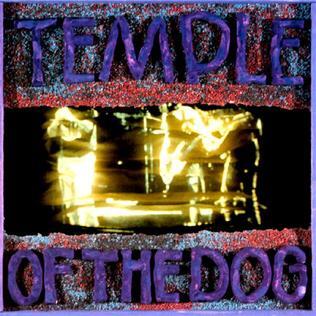Singles: When Grunge Went to College

I remember very precisely when I was sitting in the Commons at University of Florida in late 1991 and listened to Nirvana’s Nevermind for the first time and was blown away. However, I didn’t really tie it to a vibrant music scene in Seattle until seeing the movie “Singles” later in 1992 at which time I became somewhat obsessed with grunge and that obsession has never really died since. This article is about the history of Seattle music around the late 80s and early 90s, how cinema changed our perception of it, and how it changed as a result.
Say Anything
When Microsoft moved to Seattle in 1986 creating a silicon revolution for Boeing city, it was a rather quite event at the time. Seattle was known by true music fans as the once birthhome to the astounding Jimi Hendrix, but Jimi’s trajectory took him very early far from his northwest routes and Seattle sunk back into music oblivion.
The movie “Say Anything” came out in 1989 and suddenly Seattle was back in the public spotlight. A relatively small success of a film, it was mostly a John Cusack vehicle and Cameron Crowe’s directoral debut. The soundtrack was excellent featuring some bands that got early boosts (Living Color, Red Hot Chili Peppers, The Replacements, Fishbone) and some veterans (Depeche Mode, Nancy Wilson, Peter Gabriel), but ironically, none of these bands were from Seattle.

In the background and relatively far from the public eye, the grunge scene was taking off in the wet, slick streets and clubs of Seattle’s night scene. Bands like Mudhoney, Soundgarden, and Green River were already forging new sounds based on a loose mashup of classic rock, punk, and metal. Mother Love Bone featured the gorgeous voice of the young Andy Wood as well as the core of Green River: Jeff Ament, Stone Gossard, and Bruce Fairweather. An early warning into what would be a tragic trend in the bands of this era, Andy Wood overdosed on heroin in 1990, he was 24. Ament, Gossard, and their friend and former roomate of Wood, Chris Cornell of Soundgarden as well as Soundgarden’s drummer Matt Cameron came together for a one-off project called Temple of the Dog to honor their friend’s passing.

The immediate result of this collaboration was for formation of Pearl Jam with the addition of Eddie Vedder (from LA, not Seattle) who sang with Chris on the epic song “Hunger Strike” on the Temple of the Dog project as well as Mike McCready.
Nirvana
For me 1991 was one of rock-n-roll’s more epic years with albums as diverse as Metallica and U2’s Achtung Baby as well as Blood Sugar Sex Magic by the Red Hot Chili Peppers. But what really happened in 1991 was the explosion of music from Seattle: Pearl Jam’s Ten started the ball early, Badmotorfinger by Soundgarden, Uncle Anaesthesia by Screaming Trees, the previously mentioned Temple of the Dog tribute album, Pretty on the Inside by Hole, and Every Good Boy Deserves Fudge by Mudhoney, but it was really Nevermind by the trio of Kurt, David, and Krist that set the tone. Kurt’s acid vocals, his screachy guitar, David’s relentless drum attack, and Krist’s solid bassline burn down the house on this incredible album.
So much as been written about Kurt and about Nirvana, that I don’t want to rehash it all here. I will just say that the “Heck” movie about Kurt is an extraordinarily honest look at his life and I would further recommend the episode “Subterreanean” from the Foo Fighter’s HBO series Sonic Highway as it is one of the rare times that David Grohl speaks about the Nirvana years and their aftermath in his life.
Most grunge music dealt with themes of teen angst and drug addiction (particularly in Alice in Chains and Soundgarden) as well as child abuse (Pearl Jam). Nirvana’s Nevermind dealt with these in perhaps an even more visceral and raw manner over Kurt’s screaming vocals and soaring guitar licks.
Needless to say, after this album was released in September 1991, it became an immediate bombshell exploding the music market, rocketing Nirvana to millionnaire status. Kurt’s fragile psychology (and his failure to definitively quit heroin) inevitably resulted in his depressing suicide two years later, but let’s look now at the movie at the center of this article.
Singles
Cameron Crowe’s directed his second film Singles that came out in June 1992. Featuring an all-star cast including Bridget Fonda, Matt Dillon, and Bill Pullman, it was a more complex plot than Say Anything, but more importantly, it was more rooted in Seattle. The characters go to concerts of Soundgarden and Alice In Chains, visit Jimi Hendrix grave, and visit many now epic locations in Seattle. In other words, Seattle itself is a character in the film.

More importantly however, the soundtrack was almost entirely Seattle (with the exception of Minneapolis-native Paul Westerberg). In grad school, I got this album and was mesmerized by the music because it was a much more complete and diverse view of the Seattle grunge scene than just the songs that had made college radio in distant Florida (primarily Nirvana and Pearl Jam but also a few songs from Soundgarden and Alice in Chains.
The movie itself has a more existential feel in searching for meaning than Say Anything, and I felt that it showed grunge trying to grow out of its more adolescent origins into a bigger statement for Generation X. The book Generation X by Douglas Coupland had come out in March 1991, but I think I discovered it about this same period of 1992 and it put names on many of the raw emotions that grunge tried to express.
The problem however was heroin. So many people died from this generation, Andy and Kurt early on, but Layne Staley, Mike Starr (both of Alice in Chains), Chris Cornell later, and this seemed to take a lot of wind out of the sails of grunge music. There were grunge wannabes like Stone Temple Pilots who also suffered the addictions and early deaths of their band members (Scott Weiland and Scott Bennington). Maybe it was just too dark, I dunno. But there was an undercurrent to the grunge scene that washed away in the wake of all these deaths.
Conclusion
I personally am glad that grunge came about when it did and I still mourn for the many deaths that occured over the years. I feel like the angst they expressed is still there, but has kind of morphed into the famous standoffishness of the millennials, the inheritors of grunge culture as they drink their Starbucks lattes and get their noses pierced. Will there ever be another rebirth of rock-n-roll as violent and poignant as that chronicled by the Singles soundtrack and exemplified by the many albums that came out of Seattle in 1991?



